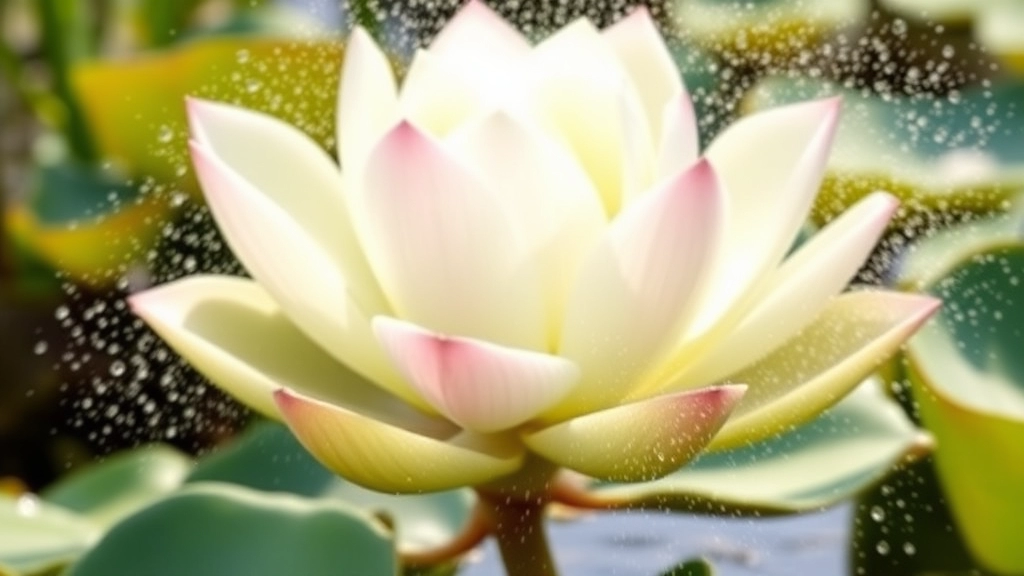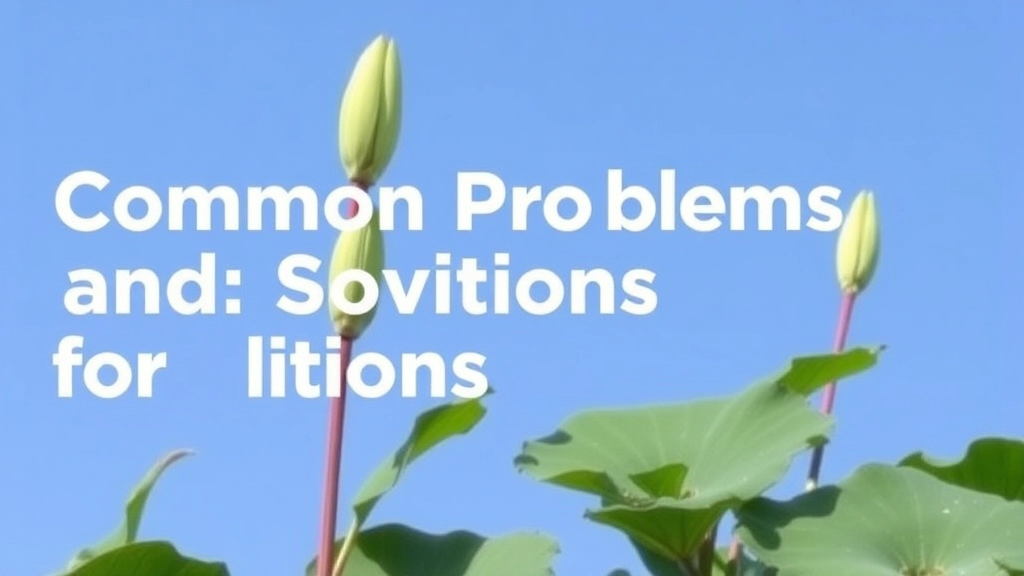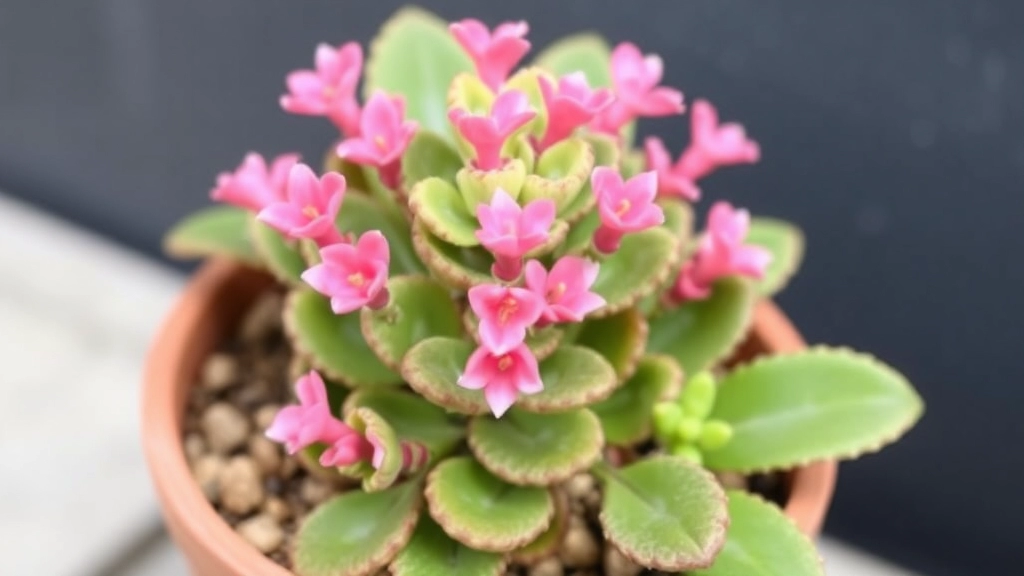Kalanchoe Paddle Plant Care
The Kalanchoe Paddle Plant, known for its striking paddle-shaped leaves, is a favourite among succulent enthusiasts. To keep your paddle plant thriving, it’s essential to understand its ideal growing conditions. This unique succulent loves bright, indirect sunlight and well-draining soil. Too much direct sunlight can scorch its leaves, while poor drainage can lead to root rot.
Watering Guidelines
Watering your Kalanchoe Paddle Plant correctly is crucial. During the growing season, water thoroughly but allow the soil to dry out between waterings. In winter, reduce watering significantly as the plant goes dormant.
Propagation
Propagation is straightforward; simply use offsets or cuttings to grow new plants.
Common Issues
Keep an eye out for common issues like pests and powdery mildew, and adjust care routines seasonally to ensure your paddle plant remains healthy year-round.
Ideal Growing Conditions for Paddle Plants
When it comes to paddle plants, also known as Kalanchoe thyrsiflora, many enthusiasts often wonder about the best conditions for their growth.
Watering Schedule and Techniques for Paddle Plants

So, you’ve got your paddle plant, and now you’re wondering, “How often should I water it?”
Let’s dive into the watering schedule and techniques that will keep your paddle plant thriving.
Watering Frequency
Paddle plants are pretty forgiving when it comes to water, but finding that sweet spot is key.
- During Growing Season (Spring and Summer): Water every 2-3 weeks.
- During Dormant Season (Fall and Winter): Cut back to once a month.
Signs of Underwatering or Overwatering
It’s all about balance. Look out for these signs:
- Underwatering: Leaves shrivel and look wrinkled.
- Overwatering: Leaves turn yellow and may drop off.
Watering Techniques
Getting the watering right is crucial for paddle plants. Here’s how to do it effectively:
- Check the Soil: Stick your finger about an inch into the soil. If it feels dry, it’s time to water.
- Water Thoroughly: When you water, do it until you see some drainage from the bottom of the pot. This ensures the roots get enough moisture.
- Use Well-Draining Soil: A mix designed for succulents works wonders. It prevents water from sitting around the roots.
Additional Tips
- Water in the Morning: This helps the plant absorb moisture before the heat of the day.
- Avoid Watering the Leaves: Focus on the soil to prevent rot.
Propagation Methods for Paddle Plants
As we delve into the fascinating world of paddle plants, many of you may wonder how to propagate these unique succulents effectively.
Why Propagate Paddle Plants?
Propagation allows you to multiply your paddle plants, share them with friends, or even create a lush indoor garden.
Common Problems and Solutions for Paddle Plants

As we delve into the common issues that paddle plants face, it’s essential to recognise that even the hardiest of plants can encounter challenges. By understanding these problems, we can ensure our paddle plants thrive.
1. Overwatering
One of the most frequent issues with paddle plants is overwatering.
- Symptoms: Yellowing leaves, mushy stems, and root rot.
- Solution:
- Allow the soil to dry out completely between waterings.
- Ensure pots have proper drainage holes.
- Use well-draining soil to prevent water accumulation.
2. Underwatering
Conversely, underwatering can also pose a threat.
- Symptoms: Wrinkled leaves and dry, crispy edges.
- Solution:
- Establish a consistent watering schedule.
- Check the soil moisture regularly; water when the top inch feels dry.
3. Pests
Paddle plants can attract pests like mealybugs and aphids.
- Symptoms: Sticky residue on leaves, visible insects, and wilting.
- Solution:
- Treat infestations with insecticidal soap or neem oil.
- Regularly inspect your plants to catch pests early.
4. Sunburn
Excessive sunlight can lead to sunburn on paddle plants.
- Symptoms: Brown, scorched patches on leaves.
- Solution:
- Move your plant to a location with filtered sunlight.
- Gradually acclimatise your plant to brighter conditions.
5. Leaf Drop
If your paddle plant is shedding leaves, it may be stressed.
- Symptoms: Leaves falling off prematurely.
- Solution:
- Assess environmental factors: light, water, and temperature.
- Ensure your plant is in a stable environment, away from drafts.
Seasonal Care for Paddle Plants
As the seasons change, so do the needs of your paddle plants. Understanding these seasonal shifts is crucial to keeping your plants thriving year-round.
Spring: Awakening Growth
In spring, paddle plants emerge from their winter dormancy, eager to grow.
- Increase Watering: As temperatures rise, increase your watering frequency. Aim for a balanceâallow the soil to dry out between waterings to prevent root rot.
- Fertilise: Introduce a diluted, balanced fertiliser every four to six weeks to support new growth.
Summer: Peak Care
Summer brings warmth and sunlight, providing ideal conditions for paddle plants.
- Light Exposure: Ensure your plants receive bright, indirect sunlight. Too much direct sun can scorch their leaves.
- Humidity: If your home is air-conditioned, consider increasing humidity around your plants. A pebble tray with water can help maintain moisture levels.
Autumn: Preparing for Dormancy
As temperatures begin to drop, it’s time to prepare your paddle plants for the cooler months.
- Reduce Watering: Gradually decrease your watering frequency. Your plants will require less moisture as their growth slows.
- Check for Pests: Autumn is a good time to inspect for pests that may have taken shelter during the warmer months.
Winter: Resting Phase
Winter is a period of rest for paddle plants, and they need special attention.
FAQs about Kalanchoe Paddle Plant
How often should I water my paddle plant?
During the growing season (spring and summer), water your paddle plant every 2-3 weeks. In the dormant season (fall and winter), reduce watering to once a month.
What are the signs of underwatering and overwatering?
Underwatering: Leaves will shrivel and look wrinkled. Overwatering: Leaves will turn yellow and may drop off.
How do I check if my paddle plant needs water?
Stick your finger about an inch into the soil. If it feels dry, then it’s time to water.
What type of soil is best for paddle plants?
Use well-draining soil, preferably a mix designed for succulents, to prevent water from sitting around the roots.
How should I water my paddle plant?
Water thoroughly until you see some drainage from the bottom of the pot. This ensures the roots get enough moisture.
What are the common problems paddle plants face?
Paddle plants can face issues like overwatering, underwatering, pests, sunburn, and leaf drop.
How can I treat overwatering in paddle plants?
Allow the soil to dry out completely between waterings, ensure pots have proper drainage holes, and use well-draining soil.
What should I do if my paddle plant is underwatered?
Establish a consistent watering schedule and check the soil moisture regularly. Water when the top inch feels dry.
How do I deal with pests on my paddle plant?
Treat infestations with insecticidal soap or neem oil, and regularly inspect your plants to catch pests early.
What can I do if my paddle plant gets sunburned?
Move your plant to a location with filtered sunlight and gradually acclimatise it to brighter conditions.
Why is my paddle plant shedding leaves?
Leaf drop can be a sign of stress. Assess environmental factors such as light, water, and temperature, and ensure your plant is in a stable environment away from drafts.
References
-
Watering Schedule and Techniques for Paddle Plants
-
Common Problems and Solutions for Paddle Plants
-
Signs of Overwatering and Underwatering in Paddle Plants
